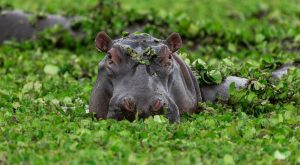Search the internet for which pineapple is the sweetest, and you will get a plethora of answers. Some will say Ugandan. Others will say, Brazilian, Costa Rican, or Hawaiian.
Why all the different answers? Well, people simply have different opinions. Taking that into account, we’ve decided to take a more scientific approach to answer this question.
Which country has the sweetest pineapple and how can we possibly know? Sugar. The heavier a pineapple is, the more sugar it has, and therefore, the sweeter it is.
The place with the heaviest, sweetest pineapples is Hawaii, specifically Sugarloaf pineapples from the island of Kauai.
Table of Contents
An introduction to Sugarloaf pineapples, the sweetest pineapples in the world
Before granulated sugar granulated and cubed sugar gained popularity, sugar was shaped into round ovals, called sugarloaves, used for shipping and storage.
Sugarloaf pineapples get their name from those old sugar blocks due to their similar dimension, shape, and astonishing sweetness.
Adding to Kauai pineapples’ deserved reputation for sweetness is the fact that these pineapples are the least acidic and fullest-flavored of pineapples.
Sugarloaf pineapple plants like full sunshine, well-drained soil, and require minimal care and attention to grow their mouth-watering tropical fruit.
The arching leaves and the central core of the plant can grow to an average height of three to five feet, with widths as much as five feet. Sugarloaf pineapple plants take two to three years to bear fruit after maturing.
Sugarloaf pineapple leaves have tiny spines along the edges. However, these pineapples are not particularly heavily defended by spines compared to other varieties of pineapples.
It is really easy to plant and maintain (these plants can survive temperatures as low as 30°F). Nothing prevents you from planting and harvesting them in your garden.
What Sugarloaf pineapples look and taste like
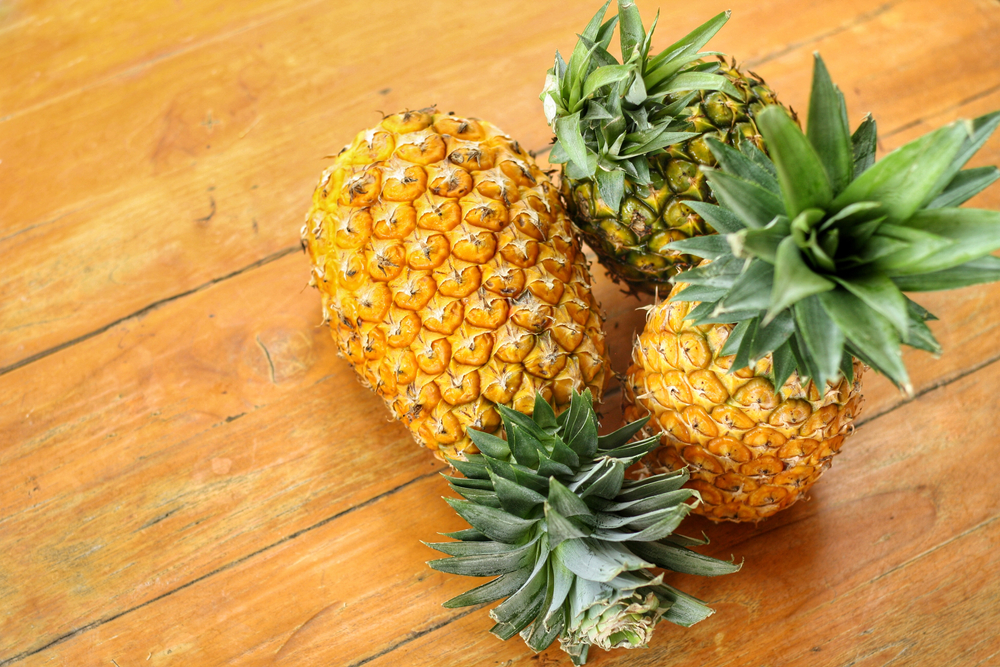
The rind of the Sugarloaf pineapple, which is covered by tiny soft spikes, is thin, waxy, and hard, yet it is still softer than other varieties.
Sugarloaf pineapples keep their vibrant green hue even when mature, with the golden yellow-orange tones in the middle of the hexagonal segments.
Sugarloaf pineapples are decorated with the tightest of stiff, pointed-tipped, stiff leaves.
The white flesh of their fruit is delicious, with a floral fragrance and a soft, firm, non-stringy appearance. The flavor is extremely sweet, with honey-like hints and virtually none of the acidity.
The edible part is as sweet and delicious and, unlike the other types, it’s not fibrous or woody.
Botanical facts about Sugarloaf pineapples for the science-minded
Botanically, the Sugarloaf variety of pineapples belongs to the Bromeliad family and is categorized as Ananas comosus.
Their name is derived from the cone-shaped sugarloaf form, which used to be how humans transported and sold sugar until the 19th-century advent of sugar cubes and granulated sugar.
In South America, Sugarloaf pineapples are often referred to as Pan de Azurra, Brazilian White pineapples, Kona Sugarloaf, or just Kona.
Just like other pineapple varieties grown on the islands, the Hawaiian Sugarloaf pineapples are seedless.
To preserve the unique pineapple, Hawaii state bans the importation of hummingbirds because hummingbirds are primary pollinators of the fruit and would inevitably degrade the state’s exceptional pineapple.
Nowadays, Sugarloaf pineapples are exported and grown throughout the world, but this variety remains most widespread on the island of Hawaii.
The history and geography of Sugarloaf pineapples
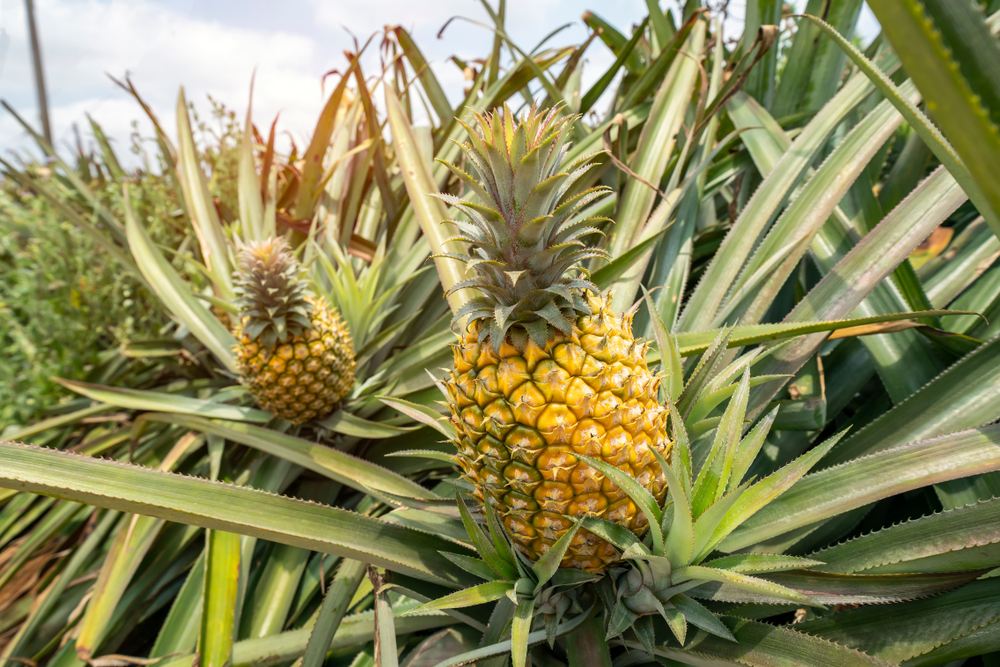
Pineapples originate from South America. Traders and explorers brought the fruit across the Caribbean Islands, Central America, and Mexico.
Christopher Columbus introduced the fruit to Spain, having first come upon them in Guadeloupe in 1493.
There is a belief that white pineapple cultivars such as Sugarloaf were first discovered in West Africa, while others believe this was an organic variation of a smooth cayenne variety found on the Hawaiian Island of Lanai.
However, what is indisputable is that until the beginning of the 19th century, Sugarloaf pineapples were grown in Hawaii.
At the close of the 16th century, Portuguese and Spanish travelers took pineapples to the South Pacific, Asia, and West Africa.
Nowadays, Sugarloaf pineapples grow in Hawaii and the southern part of Florida, West Africa, Rwanda, and even South America.
Sugarloaf pineapples can only be found in areas with plenty of rainfall and temperatures that don’t often fall and then remain below 40°F.
Cultural and ethnic Sugarloaf pineapple facts and information
Sugarloaf pineapples are economically important in two distinct cultivation areas: the Hawaiian island of Kauai, and Benin, a small coastal West African country.
On Kauai, Kona Sugarloaf pineapples are primarily grown on three farms owned by families and then exported to other islands and certain areas located on mainland USA.
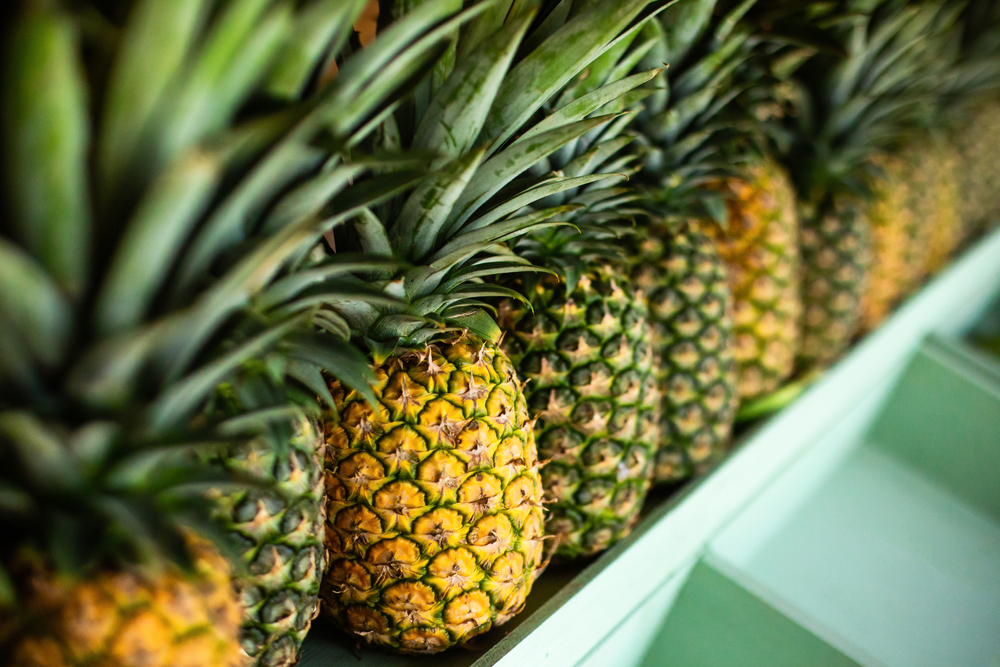
The Benin Republic’s pineapple industry began around 1985 and has since extended to Nigeria, Togo, and Ghana.
In 2014, the Nigerian government launched a program to decrease hunger and poverty, increase profits from exports, increase food security, and close the gap between demand and supply.
Sugarloaf pineapples nutritional facts
These pineapples are an excellent source of fiber, Vitamin C, calcium, and potassium. They also have vitamins B6 and B1, folate, copper, phosphorus, and magnesium.
They are also a good source of manganese. Their nutritional value overall boosts anti-inflammatory, immunity, and digestive system support.
How people use Sugarloaf pineapples
Sugarloaf pineapples are typically consumed raw, but they are also used in cooked dishes. Fresh Sugarloaf pineapples can be sliced and eaten raw, juiced, or blended for smoothies and other kinds of drinks and cocktails.
Sugarloaf pineapples are a great addition to salads, in baking, or used as a topping on cheesecakes and custards because of their high sugar content.
They are also great in combination with other tropical fruits such as papaya, coconut, or banana and herbs such as cilantro, Thai basil, and mint.
The sweet taste of Sugarloaf pineapples can be used to counteract the heat from cayenne and jalapeño peppers and balance out warming spices like ginger and cinnamon.
Pineapples mature from the bottom upwards, which means that the lower portion could be sweeter than the top.
To spread the sweetness evenly across the fruit, cut off its crown, then keep the fruit upside down in a covered container in your fridge for at least a day or two before using it.
Fresh Sugarloaf pineapple is extremely perishable and can stay at room temperature only for a few days.
To extend its shelf life, keep an uncut Sugarloaf pineapple in a fridge for no longer than a week. However, you can also cut them up into pieces and freeze them for up to six months.
Freshly cut pineapple pieces can be kept inside sealed, air-tight containers in refrigerators for up to five days.
Sugarloaf pineapples’ availability to consumers
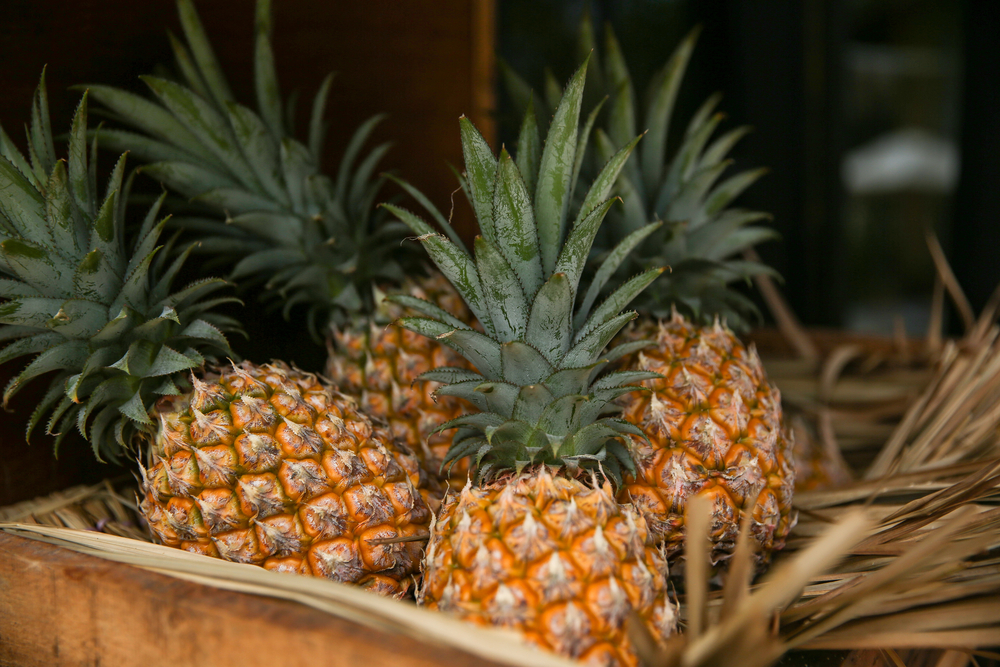
Sugarloaf pineapples are sold all year round, but peak during mid-to-late summer.
Two simple recipes that use Sugarloaf pineapples
Before we get started, let’s discuss choosing sweet, ripe pineapples first. These instructions work for all pineapple varieties, not just Sugarloaf pineapples.
How to choose a sweet, ripe pineapple
- You should look for a large-sized pineapple with yellow or golden shades on its skin or peel. This indicates sweetness. It’s also a good idea to look for “Golden Pineapple” on the label.
- Take a sniff. If you detect some sweet pineapple scent, you’re on the right path.
- Examine the feel. The pineapple should be firm and give only a tiny amount when you touch it. Be sure to put back anything injured or soft.
Sugarloaf pineapple salsa
This pineapple salsa recipe uses fresh lime, red onion, jalapeno, and avocados – yummy!
Ingredients for a 6-person serving:
- 1 cup finely chopped red onion (1/2 of a large onion)
- 1 lime, juiced and zested
- 1 medium avocado peeled and broken into 1-inch chunks
- 1 medium-sized pineapple, peeled with core removed, cut into pieces of 1/4-inch (5 cups)
- 1/3 cup of loosely compacted cilantro leaves, tender stems chopped
- Sea salt 1/4 tablespoon
- 2 jalapeños, or for taste
Step 1. You’ll need a mature fruit (see above for how to choose sweet, ripe pineapples) and a well-ripened avocado. Cut everything into reasonably small sizes.
When cutting the pineapple, begin by removing its ends. Cut along the pineapple’s curve from top to bottom. After that, use your knife to cut off the skin or peel.
Step 2. Cut the pineapple into quarters, cutting out any pieces of the fibrous core that are still remaining. Once the quarters have been de-cored, chop them into small pieces to make salsa.
Step 3. It’s perfectly okay to include onions in this salsa. However, before adding them, take some of their oniony “bite” away by “de-flaming” them to reduce the “rawness” of the onion.
De-flame the onions by dicing and adding them into a bowl containing warm water. Let the diced onions sit for five minutes, then rinse them off and add them to the pineapple salsa.
Step 4. For the spicier part of the recipe, get your jalapeño peppers. How many jalapeños you use depends on how hot you want your salsa. In fact, you could even leave them out entirely if you want (although we recommend giving them a go!).
Note that by taking out the white part (the skin) and seeds, you lessen the jalapeño’s heat. To achieve a moderate spice level, add two jalapeños from which you have removed their skins and seeds.
Dijon Mustard Pineapple Salad
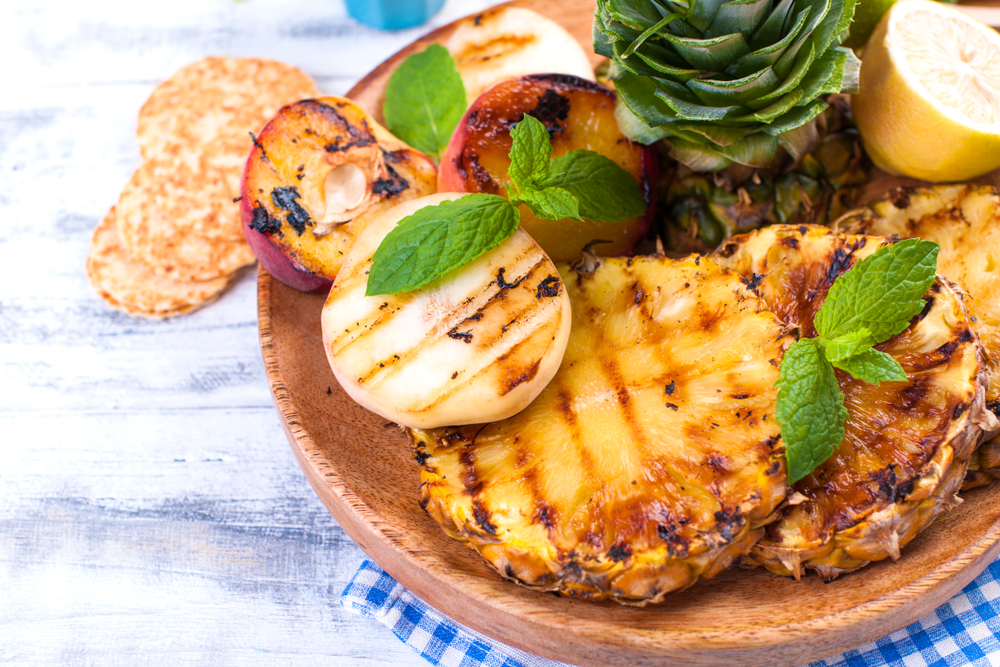
This unusual–but delicious–salad departs from boring and same-old, same-old lettuce, using arugula, a cousin of cabbage, kale, and broccoli instead. Arugula has a spicy, peppery taste that definitely adds ‘zing’ to a salad.
Ingredients for an eight-person serving:
- 1 cup of pine nuts, lightly toasted
- 1/2 cup extra virgin olive oil
- 1/2 teaspoon Dijon mustard
- 3 pounds cheese (try a fruity-tasting cheese that has a texture like parmesan)
- 3 tablespoons vinegar with balsamic.
- 4 cups washed arugula
- Fresh Sugarloaf pineapple, peeled
- Salt and pepper
- Water
Step 1. For the dressing, mix balsamic vinegar and mustard. Slowly drizzle in olive oil, whisking. Adjust the seasoning to your liking.
Step 2. If the dressing appears too thick, mix in a tablespoon or two of water (this will allow the dressing to be arugula-friendly without weighing the arugula down).
Step 3. To make the salad, put the arugula on the platter. Place the pineapples on top of the arugula. Remove the core of the pineapple and slice it as thinly as is possible.
Step 4. Place thin slices of the red onion decoratively on the salad. Sprinkle pine nuts on top. Utilizing a vegetable peeler or cheese blade, cut curly shards or thin pieces of cheese over the salad.
Step 5. Drizzle dressing on it, add some light seasoning and serve.
Other contenders for “sweetest pineapples” in the world
Countries that claim to have the “sweetest pineapples in the world” are also, unsurprisingly, the same countries that grow pineapples:
- Brazil
- China
- Costa Rica
- India
- Indonesia
- Nigeria
- Philippines
- Thailand
As mentioned earlier, many websites promote other pineapples as the sweetest in the world.
However, their claims aren’t backed up by measuring sugar content.
While Sugarloaf pineapples are the sweetest in the world (according to actual sugar content), let’s take a look at a top contender.
The Antigua Black pineapple
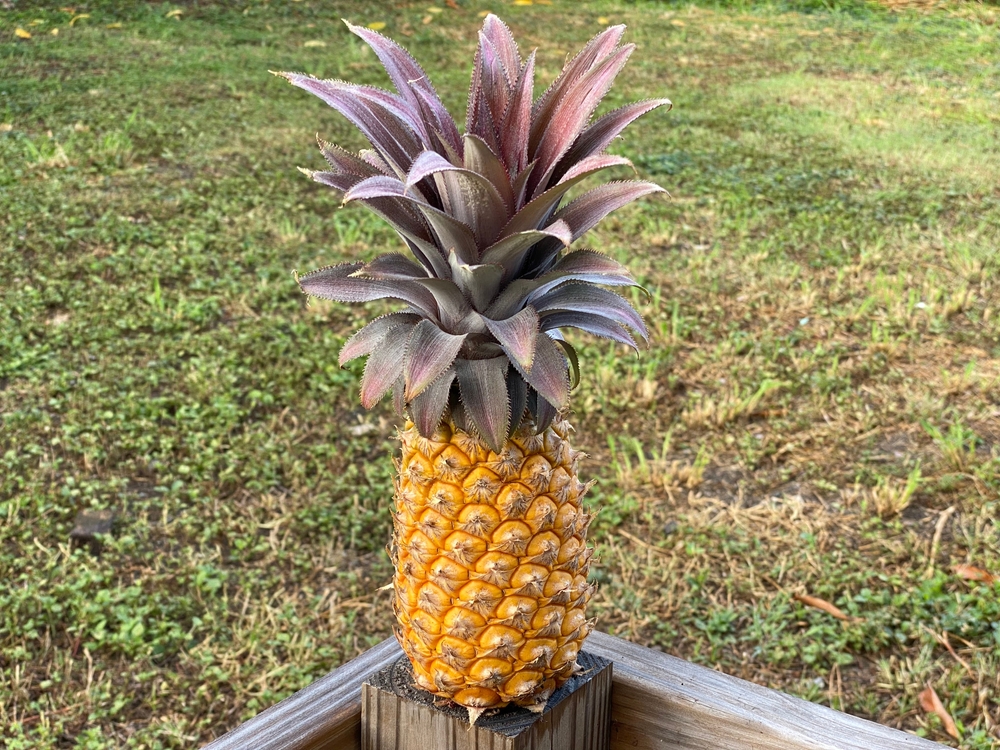
The Antigua Black is part of the “Queen” group of pineapples that are cultivated mainly along the southwest coast of Antigua, close to Cades Bay.
Officially, the fruit from Antigua is known as the “Black Pineapple.” This pineapple is claimed by some to be the sweetest in the world.
Supposedly, the delicious flavor of the Antigua Black is due to the specific soil and amount of rainfall that allows its sugar levels to be greater than other types of pineapple.
Well, that’s all very nice and everything, but unfortunately, it’s a load of nonsense. The sugar content in Antigua Black is not greater than that of the Kauai Sugarloaf.
Fun fact about pineapples
Pineapples are terribly misnamed
After all that, pineapples are neither pines nor apples! They are actually berries. The thing is, pineapples are made up of several individual berries that fuse to a central stalk.
So actually, each individual pineapple is a berry, and the entire fruit is a pod of berries.













